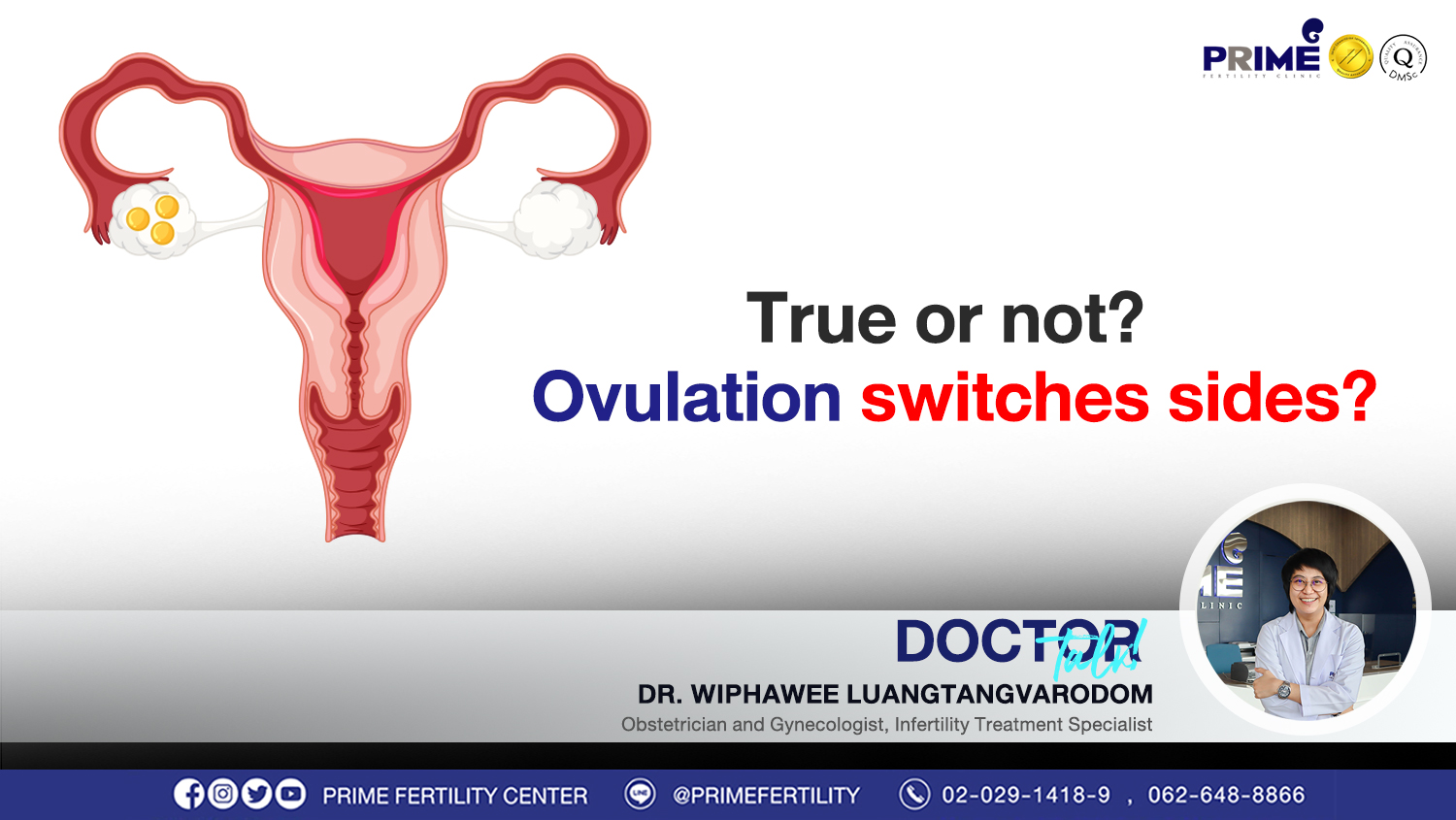There is a belief about whether ovulation switches sides. Last month was right-sided ovulation, so this month must be left-sided? Is it true that it keeps switching sides every month?
The answer is no.
Ovulation within the female body does not switch sides but it can randomly happen on the same side or different side. Every cycle, the body will produce eggs. Then, the biggest and strongest egg will be chosen. So, the egg can be randomly produced within the same-sided or different-sided ovary. To make it simple, if ovulation does happen on any side during the month, the ovulation could happen on the same or different side next month.
So, the belief saying that ovulation does switch sides every month is not true at all.
Reference: Prime Fertility Center Co., Ltd.
If you’re interested in our ICSI program, kindly find more details via our website: www.primefertilitycenter.com/en/package-promotion-4/foreign-couple-package-2021-2/foreign-couple-package-2021/
ICSI (Intracytoplasmic Sperm Injection) is an in vitro fertilization procedure with the laboratory technology. Both IVF and ICSI are comprising of similar procedures. But the difference is how sperm will fertilize an egg. In ICSI program, only one best sperm cell will be selected then injected directly into a fully matured egg. Patients will be prescribed some hormonal medications. Stimulating ovaries to produce several eggs. ICSI can make a pleasant fertilization rate. As well as reduces some fertilization problems or abnormalities caused from egg and sperm. For examples: multiple sperm fertilize an egg, sperm cannot penetrate the egg. The combined egg will transform to be an embryo after fertilization. Next, the embryo will be raised and will grow up among the appropriate environment inside a laboratory. Finally, the embryo will be transferred to the uterine cavity in order to implant then develop to be the fetus later on.
Couples who should receive the infertility treatment with ICSI program:
– Female’s age more than 35 years
– Stenosis for both sides of the fallopian tube
– Severe Endometriosis
– Estrogen dysfunction for examples: Chronic Anovulation, PCOS (Polycystic Ovary Syndrome)
– Severe sperm abnormalities including sperm morphological defect, low sperm count, poor sperm motility
– Male who is sterile or had a vasectomy but the body can still produce sperm. To extract sperm under this limitation, a – – surgical procedure will be performed such as PESA, TESA, TESE.
– Couples who have failed from every previous IVF cycle
– Couples who prefer to screen the embryo’s genetic diseases
FROZEN EMBRYO TRANSFER (FET)
Frozen Embryo Transfer (FET) is the process of embryo transplantation into the uterus after thawing frozen embryo. The patient can choose the FET date by convenient time e.g. 1-2 months after the oocyte collection date. The evidence supports FET in women more than 35 years of age are providing more pregnancy rates than FRESH embryo transfer.
Due to the inducing medication that the female takes to develop multiple of healthy ova, the huge amount of hormones generated will weaken endometrium, consequently lessening the success rate of the transfer regardless of the perfect condition of embryos. Given the circumstance, FET may not be an effective protocol.
However, a number of research institutes find that FET offers better and higher chance of pregnancy because endometrial tissue is in more proper state for embryos. Therefore, the doctor will have to decide which protocol fits best for each couple.

